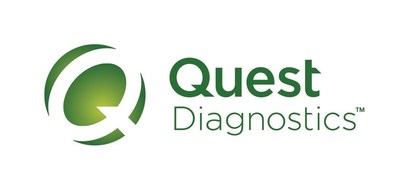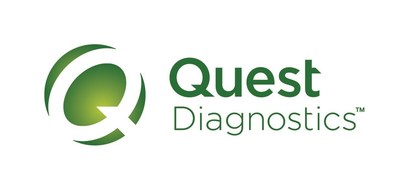MADISON, N.J., July 26, 2016 /PRNewswire/ -- The majority of American adults taking opioids and other commonly prescribed medications use them in ways that put their health at risk, including potentially dangerous combinations with other drugs, according to a new study from Quest Diagnostics (NYSE: DGX), the world's leading provider of diagnostic information services.

Believed to be the largest ever examination of prescription drug misuse patterns based on physician-ordered laboratory tests, the multi-year analysis of 3,143,739 de-identified test results revealed that 54 percent of patient results tested in 2015 showed evidence of drug misuse, slightly above the 53 percent misuse rate in 2014. While high, the misuse rate declined 14 percent from 63 percent in 2011. The study is based on results of patients tested in 49 states and the District of Columbia between 2011 and 2015.
"The key takeaway from this massive, nationally representative analysis is that despite some gains, a large number of patients use prescription drugs inappropriately and even dangerously," said co-researcher Harvey W. Kaufman, M.D., senior medical director, medical informatics, Quest Diagnostics. "The CDC's recent recommendations to physicians to carefully weigh the risks and benefits of opioid drug therapy are a step in the right direction, but clearly more needs to be done to address this public health crisis."
Drug misuse is defined as evidence, based on lab test results, that a patient is using or combining non-prescribed drugs or skipping doses in a manner that is inconsistent with the ordering physician's directions. Quest's prescription drug monitoring test services help to identify evidence of use of up to 44 commonly misused prescription and illicit drugs, such as opioids, amphetamines, sedatives, and marijuana and heroin.
The Quest Diagnostics Health Trends™ report, Prescription Drug Misuse in America 2016, is available at QuestDiagnostics.com/trends
Growing Percentage of Patients Combine Drugs
The analysis also found that among patients whose test results showed evidence of prescription drug misuse, the percentage of those who combined their prescription medication with other drugs not known to the physician jumped sharply in recent years. In 2015, 45 percent of these patients had test results that showed evidence of one or more other drug(s) in addition to their prescribed drug(s). This compares to 35 percent in both 2014 and 2013, 33 percent in 2012, and 32 percent in 2011.
The findings are significant because combinations of certain drugs, such as opioids and sedatives, can result in potentially dangerous interactions, including severe respiratory depression, coma and death.
"For some patients, opioids and sedatives are co-prescribed which is of concern. The discovery that a growing percentage of people are combining drugs without their physician's knowledge is deeply troubling given the dangers. Perhaps patients do not understand that mixing even small doses of certain drugs is hazardous, or they mistakenly believe prescription medications are somehow safe," said co-researcher F Leland McClure III, PhD, medical affairs director, Quest Diagnostics, and a fellow of the American Board of Forensic Toxicology.
One in Three Patients Taking Heroin Combined it With Benzodiazepines
About 1.6 percent of patients tested for heroin showed evidence of heroin use. Heroin use was detected across all age ranges in adults tested, including those above age 65, although it was most likely to be detected in patients 25-34 years of age (3.6% among those tested) and age 18-24 (3.24%). Men were tested for heroin less frequently than women, but had a positivity rate more than 50 percent higher than women (1.97% vs. 1.26%).
The Quest researchers also found that nearly one in three patients (28.6%) who used heroin combined it with benzodiazepines, a class of prescription psychoactive medications that includes tranquilizers such as Xanax and Valium. In 92 percent of these patients, the benzodiazepines were not prescribed by a physician, meaning an illicit combination of heroin and benzodiazepines.
Benzodiazepines can have strong sedative effects, including respiratory depression, when combined with alcohol, other sedatives, or illicit drugs – including heroin. Data from the National Institute on Drug Abuse shows that from 2001 to 2014, there was a five-fold increase in the total number of deaths related to benzodiazepines.
In March 2016, the Centers for Disease Control and Prevention issued final guidelines recommending that clinicians consider opioid therapy only if expected benefits for both pain and function are anticipated to outweigh risks to the patient, and that healthcare providers perform drug tests on their patients prior to starting (baseline) and periodically during opioid drug therapy as "urine drug tests can provide information about drug use that is not reported by the patient."
Study Strengths and Limitations
The 2016 report is the fifth Prescription Drug Monitoring Report from Quest Diagnostics Health Trends™, the medical informatics unit of Quest Diagnostics, examining patterns and trends observed from prescription drug testing data performed by Quest Diagnostics laboratories. Previous reports have focused on marijuana, misuse by adolescents, and detecting heroin use.
The study's strengths are its size and national scope; use of an objective laboratory method, versus surveys or polls, which may be subject to user misrepresentation or error; confirmation of all positive drug screens by mass spectrometry, the most advanced drug testing method; and for consistency rate analysis the inclusion of patients under care by clinicians in a primary care or pain-management setting, but exclusion of those in drug rehabilitation or addiction treatment settings, where unusually high rates of drug misuse may be expected.
Study limitations include geographic disparities; inability to confirm drug misuse through access to medical records or clinical evaluation; and technical factors and patient variations, such as drug metabolism and hydration state, that may affect the reliability of a minority of results. Quest Diagnostics does not provide services to all clinicians in the U.S., so results are not broadly representative of all patients taking prescription medications in the U.S. It is also possible some clinicians tested patients due to appropriate suspicions of drug misuse, and that some clinicians omitted to specify all drugs prescribed for the patient on a test order, skewing some results.
The company's Quest Diagnostics Health Trends studies are performed in compliance with applicable privacy regulations, the company's strict privacy policies and as approved by the Western Institutional Review Board.
About Quest Diagnostics Health Trends™
Quest Diagnostics manages the largest database of de-identified clinical laboratory data, based on 20 billion data points from clinical lab testing. From this data, the company derives clinically significant insights that enable public health, policy makers and healthcare practitioners take actions to improve the health care of Americans. Developed in collaboration with top researchers and institutions that include the Centers for Disease Control and Prevention (CDC), Rockefeller University and UCSF, Quest Diagnostics Health Trends studies are published in peer-reviewed medical journals and by the company as a public service. Quest Diagnostics Health Trends reports have yielded novel insights to aid the management of allergies and asthma, chronic kidney disease, diabetes, heart disease, influenza, prescription drug misuse and wellness. Visit QuestDiagnostics.com/HealthTrends
About Quest Diagnostics
Quest Diagnostics empowers people to take action to improve health outcomes. Derived from the world's largest database of clinical lab results, our diagnostic insights reveal new avenues to identify and treat disease, inspire healthy behaviors and improve health care management. Quest annually serves one in three adult Americans and half the physicians and hospitals in the United States, and our 44,000 employees understand that, in the right hands and with the right context, our diagnostic insights can inspire actions that transform lives. www.QuestDiagnostics.com
Quest, Quest Diagnostics, and all associated Quest Diagnostics registered or unregistered trademarks are the property of Quest Diagnostics. All third-party marks are the property of their respective owners.
Contacts:
Wendy Bost, Quest Diagnostics (Media): 973-520-2800
Shawn Bevec, Quest Diagnostics (Investors): 973-520-2900
Logo - http://photos.prnewswire.com/prnh/20150422/200883LOGO
SOURCE Quest Diagnostics
